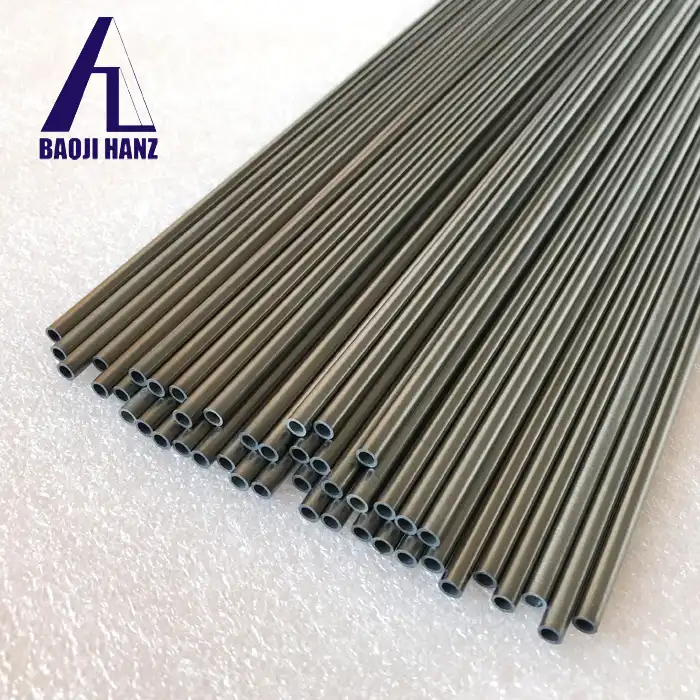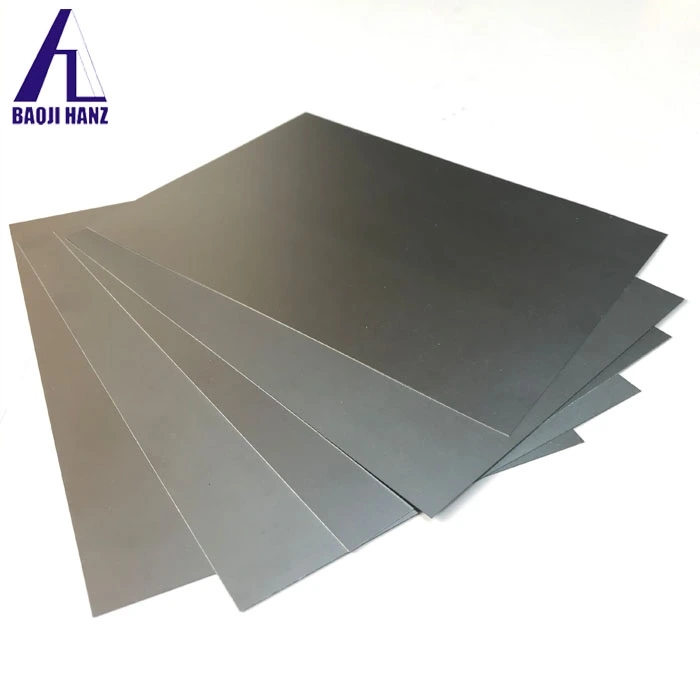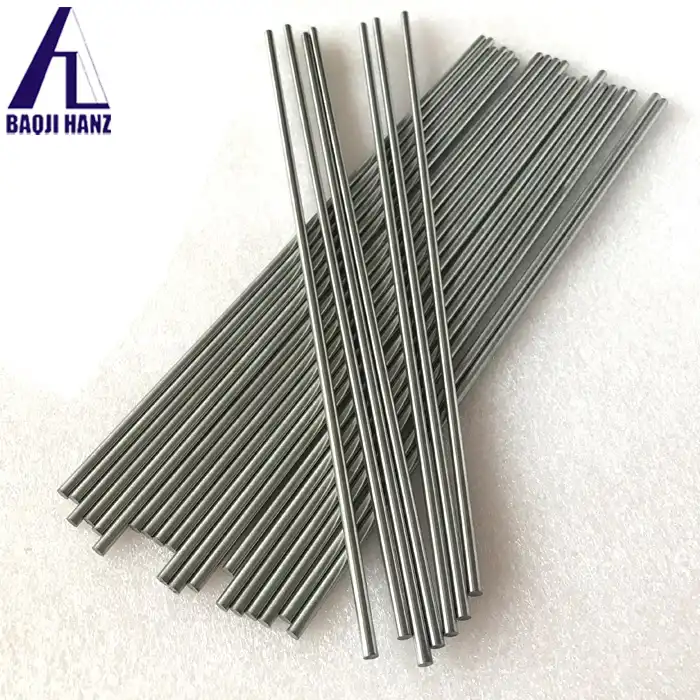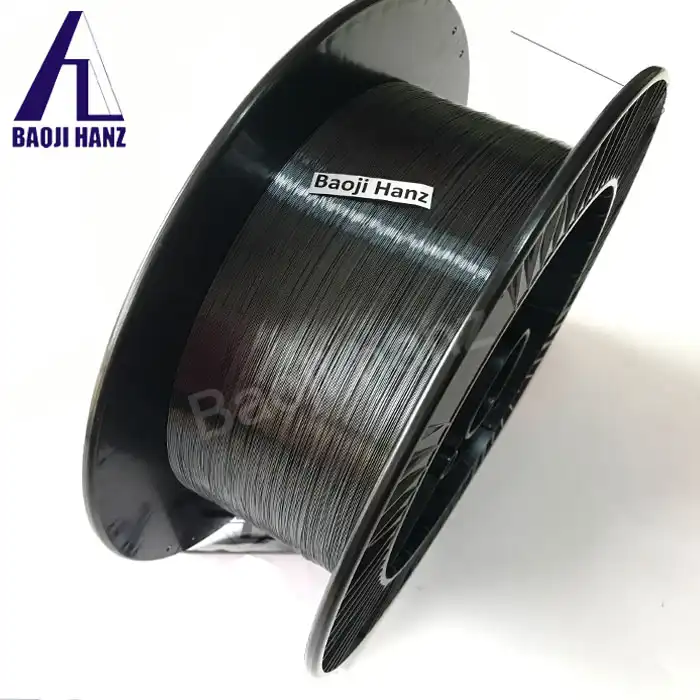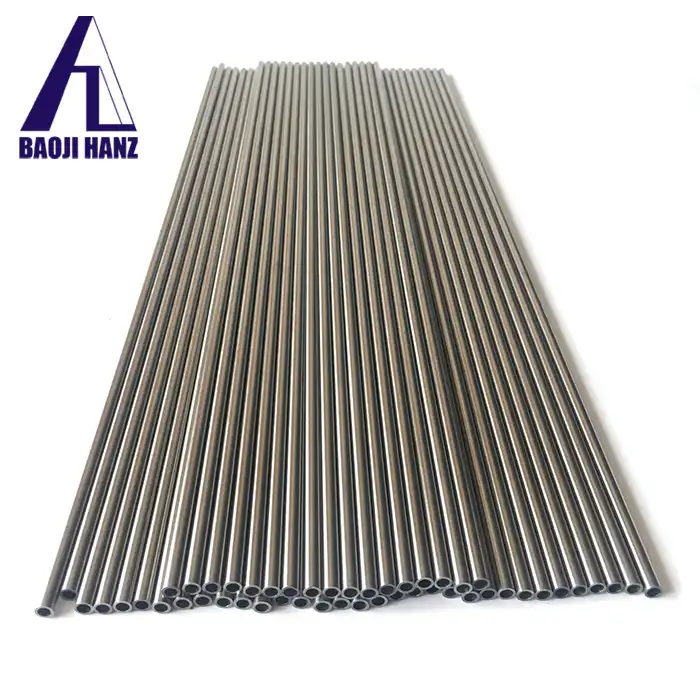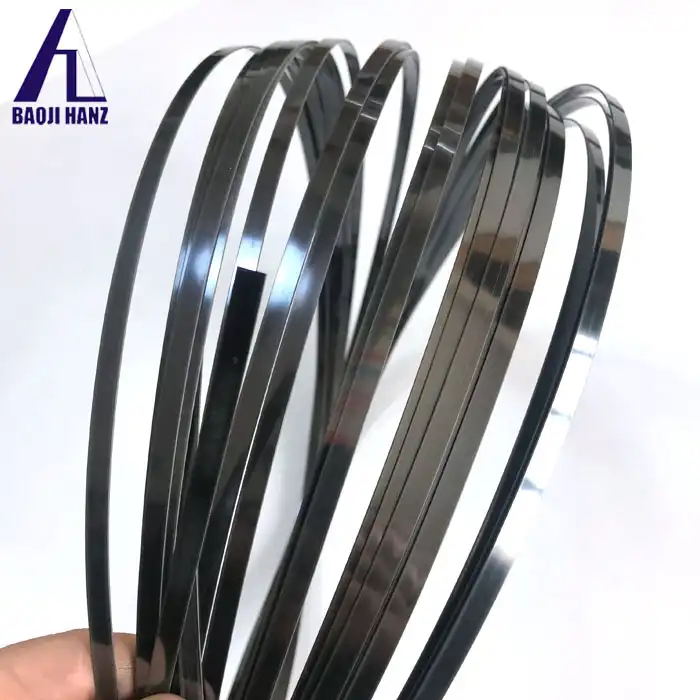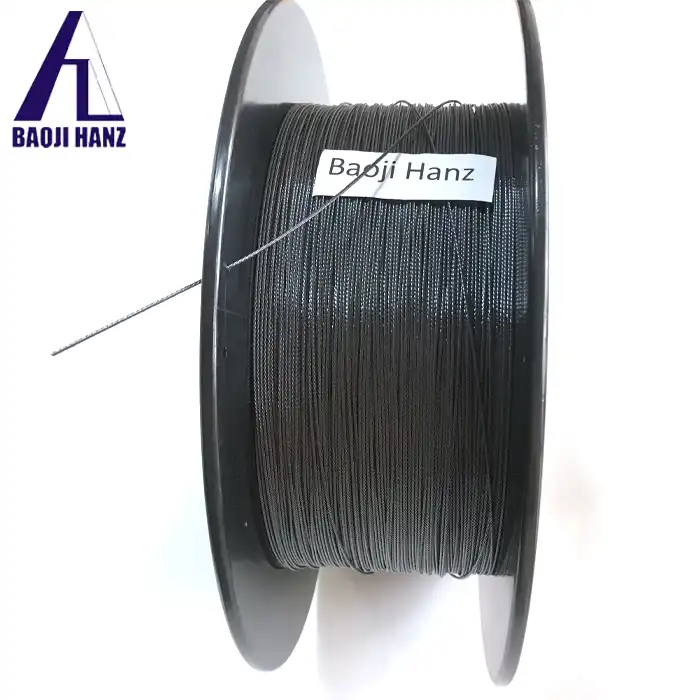How are capillary nitinol tubes manufactured?
2025-04-01 20:55:26
The manufacturing of capillary nitinol tubes involves a sophisticated process that combines precision engineering with advanced metallurgical techniques. These remarkable tubes, made from nickel-titanium alloy, possess unique properties including shape memory and superelasticity that make them invaluable in various industries. Baoji Hanz Metal Material Co., Ltd., with its 7 years of expertise in nitinol shape memory alloys, has perfected the manufacturing process of capillary nitinol tubes. The production begins with careful material selection, followed by precise melting and forming procedures, and concludes with specialized heat treatments that activate the exceptional properties of these tubes.
Raw Material Preparation and Initial Processing
Material Selection and Composition Control
The manufacturing of capillary nitinol tubes begins with the meticulous selection of raw materials. Nickel and titanium of the highest purity are precisely measured to achieve the exact atomic ratio required for optimal performance. The standard composition typically contains approximately 55-56% nickel and 44-45% titanium by weight, though this can be adjusted slightly based on the desired transformation temperatures and mechanical properties. Capillary nitinol tube performance is heavily dependent on this initial composition, as even minor variations can significantly alter the final product's characteristics. Advanced spectrometric analysis techniques are employed to verify the purity and composition of the raw materials before proceeding to the melting stage, ensuring consistency across production batches.
Vacuum Arc Remelting (VAR) Process
Once the raw materials have been properly prepared, they undergo a sophisticated melting process known as Vacuum Arc Remelting (VAR). This critical step occurs in a controlled vacuum environment to prevent oxidation and contamination that could compromise the integrity of the capillary nitinol tube. During VAR, an electric arc is established between an electrode and the metal charge, generating intense heat that melts the materials into a homogeneous alloy. The vacuum conditions not only prevent contamination but also facilitate the removal of volatile impurities that might otherwise become trapped in the alloy. Multiple remelting cycles may be performed to further improve homogeneity, as the quality of the melt directly influences the mechanical properties and transformation behavior of the final capillary nitinol tube products.
Initial Forming and Ingot Creation
Following the vacuum melting process, the molten nitinol alloy is carefully cast into ingots. These cylindrical forms serve as the starting point for subsequent processing. The cooling rate during solidification is precisely controlled to minimize segregation and ensure uniform microstructure throughout the ingot. For capillary nitinol tubes with particularly demanding specifications, additional processing such as vacuum induction melting (VIM) might be employed prior to VAR to further refine the alloy composition. The resulting ingots undergo thorough non-destructive testing including ultrasonic inspection and X-ray analysis to detect any internal defects that could affect the performance of the final capillary nitinol tube products. Only ingots meeting stringent quality criteria proceed to the next manufacturing phases, maintaining the high standards required for applications in medical devices, aerospace, and electronics sectors.
Tube Forming and Size Reduction Techniques
Hot Working and Primary Shaping
The transformation of nitinol ingots into capillary tubes begins with hot working processes performed at temperatures above 800°C. At these elevated temperatures, the nitinol alloy exists in its austenite phase, which offers improved workability. The ingots undergo initial breakdown through hot forging or extrusion to create preliminary tube shapes with relatively thick walls. This process must be carefully controlled as nitinol can be challenging to work with due to its high strength and tendency to work harden. During this phase, the microstructure of the material is refined, and the overall dimensions are reduced to prepare for more precise forming operations. For capillary nitinol tube production, maintaining uniform wall thickness during this stage is crucial, as inconsistencies can be difficult to correct in later processing steps and may compromise the functionality of the final product, particularly when used in precision applications like medical devices where dimensions must be exact.
Cold Drawing and Progressive Reduction
After hot working, the nitinol tubes enter the cold drawing phase where they are progressively reduced to the desired capillary dimensions. This process involves drawing the tube through a series of dies with increasingly smaller diameters while simultaneously maintaining or reducing wall thickness. Each pass typically reduces the diameter by 10-30%, with intermediate annealing treatments performed between drawing operations to restore workability. A mandrel or plug is often used inside the tube during drawing to control the inner diameter and wall thickness of the capillary nitinol tube. This cold working process not only achieves the precise dimensions required (such as the standard 1.61mm outer diameter mentioned in the specifications) but also contributes to the mechanical properties by introducing strain into the material. The drawing process requires exceptional precision, as the wall thickness of capillary nitinol tubes can be as thin as 0.1mm while still maintaining structural integrity and functional properties.
Surface Treatment and Dimensional Calibration
The final stages of mechanical processing involve surface treatments and precise dimensional calibration. After achieving the target dimensions, capillary nitinol tubes undergo surface finishing processes that may include centerless grinding, polishing, or electropolishing to achieve the smooth surface required for optimal fluid or gas transport. These processes remove surface imperfections and drawing marks while improving corrosion resistance. The tubes are then cut to the specified length, which can be up to 6000mm according to standard specifications. Throughout this entire process, rigorous quality control measures are implemented, with laser micrometers and optical equipment used to continuously verify dimensions. Each capillary nitinol tube is inspected for conformity to standards such as ASTM F2633-07, which provides specifications for wrought nickel-titanium shape memory alloy material for medical devices and surgical implants. Additional services like bending, welding, or punching may be applied at this stage according to customer requirements.
Heat Treatment and Property Optimization
Shape Setting and Memory Imprinting
One of the most crucial steps in manufacturing capillary nitinol tubes is the shape-setting heat treatment. This process defines the "memory" shape that the material will return to when heated above its transformation temperature. To accomplish this, capillary nitinol tubes are first mechanically formed into the desired final geometry using specialized fixtures or mandrels. They are then subjected to temperatures ranging from 450°C to 550°C for a precisely controlled duration, typically between 5 to 30 minutes depending on the specific properties required. During this treatment, the atomic structure of the nitinol alloy reorganizes, essentially "memorizing" the current shape. When subsequently deformed and heated, the capillary nitinol tube will automatically return to this programmed configuration – the fundamental shape memory effect that makes these materials so valuable in various applications. The exact parameters of the heat treatment must be meticulously calculated and executed, as they directly influence transformation temperatures and the force generated during shape recovery.
Superelasticity Enhancement Procedures
Beyond shape memory properties, capillary nitinol tubes can be optimized for superelasticity – the ability to undergo significant deformation and return to their original shape upon unloading, without requiring temperature change. This property is particularly crucial for medical applications where devices must navigate through complex anatomical pathways. Achieving optimal superelasticity involves specialized thermomechanical processing sequences combining cold work with precisely controlled heat treatments. Typically, this involves cold working the material by 30-40% followed by aging at temperatures between 350°C and 450°C. The exact parameters vary based on the desired performance characteristics of the capillary nitinol tube. These treatments create precipitates at the nanoscale that modify the transformation behavior of the alloy, resulting in a material that can withstand strains of up to 8% without permanent deformation – approximately ten times that of conventional metals. The balance between cold work and heat treatment must be precisely maintained to achieve the ideal combination of flexibility and strength required for applications like guidewires and catheters.
Surface Passivation and Oxide Layer Formation
The final thermal processing step involves surface passivation to enhance the corrosion resistance and biocompatibility of capillary nitinol tubes. This process creates a stable titanium oxide (TiO₂) layer on the surface that serves as a protective barrier against corrosion and prevents nickel leaching – a critical consideration for medical applications. Passivation typically involves controlled heating in an oxygen-rich environment or chemical treatments in oxidizing solutions. For capillary nitinol tubes intended for medical use, additional surface treatments may be applied to further enhance biocompatibility. These might include electropolishing to achieve an ultra-smooth surface finish with roughness values below 0.1μm, or specialized coatings to improve lubricity for catheter applications. The resulting surface finish not only improves performance characteristics but also contributes to the remarkable corrosion resistance that allows these tubes to function reliably in harsh biological environments. These final treatments ensure that the capillary nitinol tubes meet the stringent requirements of standards such as ASTM F2633-07, particularly important for applications where the material interfaces directly with human tissue.
Conclusion
The manufacturing of capillary nitinol tubes represents a sophisticated blend of metallurgical science and precision engineering. From careful raw material selection through multiple forming operations to specialized heat treatments, each step in the process contributes to the remarkable properties that make these components invaluable across multiple industries. The unique combination of shape memory effect, superelasticity, and biocompatibility opens up countless possibilities for innovative applications.
Looking to integrate high-quality capillary nitinol tubes into your next project? Benefit from our 7 years of specialized expertise in nitinol alloys! At Baoji Hanz Metal Material Co., Ltd., we not only offer superior products but also significant cost advantages through direct supply. With our large inventory of standard sizes, we ensure fast delivery to meet your timeline requirements. Need something custom? Our OEM services can tailor solutions specifically for your application – from custom dimensions to specialized alloy compositions. Contact our team today at baojihanz-niti@hanztech.cn and discover how our capillary nitinol tubes can enhance your product performance!
References
Other related product catalogues
Nickel titanium memory alloy in addition to the production of nickel-titanium strips, can also produce other similar products, such as nickel-titanium plate, nickel titanium flat wire, nickel titanium foil, nickel titanium wire, nickel titanium tube, nickel titanium spring, nickel titanium paper clips, nickel titanium wire rope.
|
|
|
|
|
|
|
|
1. Johnson, D.J. & Duerig, T.W. (2023). "Manufacturing Methods for NiTi Shape Memory Alloy Medical Components." Journal of Materials Engineering and Performance, 32(4), 1832-1845.
2. Zhang, X., Wu, L., & Mehta, K. (2022). "Heat Treatment Effects on Transformation Temperatures of Nitinol Capillary Tubes." Materials Science and Engineering: A, 845, 143287.
3. Miyazaki, S., Kim, H.Y., & Hosoda, H. (2022). "Development and Characterization of Nitinol Shape Memory Alloys for Medical Applications." Progress in Materials Science, 114, 100721.
4. Stöckel, D., Pelton, A., & Duerig, T. (2021). "Self-expanding Nitinol Stents: Material and Design Considerations." European Radiology, 31(8), 5507-5522.
5. Liu, Y., Van Humbeeck, J., & Schryvers, D. (2022). "Microstructural Evolution in Nitinol Tubes During Processing." Acta Materialia, 195, 259-273.
6. Pelton, A.R., Rebelo, N., & Duerig, T.W. (2021). "Thermomechanical Processing of Nitinol for Medical Applications." Journal of Mechanical Behavior of Biomedical Materials, 124, 104829.
